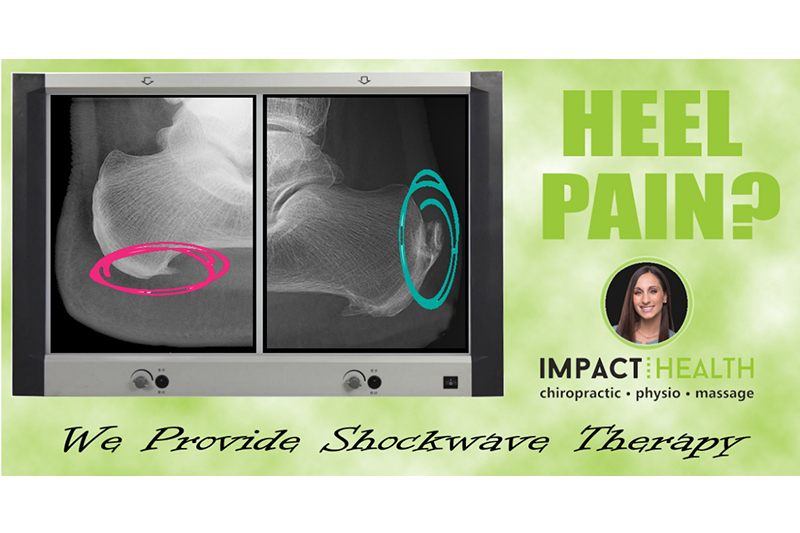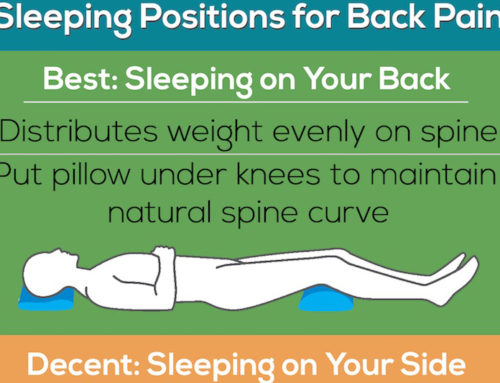
Do your feet hurt as soon as you step out of bed in the morning? Do you get heel pain from being on your feet too long?
If you’ve done a google search about heel pain, you may have come across a relatively new technology called, Shockwave Therapy. Most people with heel pain are desperate to get better, especially since we stand for most of the day! So, let’s talk about how you can get “back on your feet” with Shockwave Therapy at Impact Health Niagara.
Shockwave Therapy, also referred to as ESWT (extracorporeal shock wave therapy) was not widely available during its early stages, and people would have to travel great distances and pay a good penny to receive this highly sought-after treatment. Lucky for you, Impact Health Niagara has imported a machine from Germany and it is readily available to serve our patients in Thorold, St. Catharines, and the surrounding Niagara Region!
A bit of background info on Shockwave:
Shockwave Therapy has been around since the early 2000s. As with most new technologies, it went from being non-affordable and not fully understood or known to the general public, but now is a more common term used in the health care field. The technology behind it is similar to what is used to break down kidney stones and gall stones —- it breaks down the stones without surgery.
How Does It Work?
ESWT is an acoustic/sound wave that sends a strong pulse of energy to the tissue over a very short period of time (approx. 10 milliseconds)! The shockwave is applied to painful areas, such as the heel. The energy leads to repair and regeneration of the tissues it is directed at.
ESWT:
- Increases circulation to the area
- Increases tissue metabolism
- Breaks down calcification deposits
- Stimulates new bone cell activity
- Stimulates connective tissue healing
- Decreases pain
What other conditions can Shockwave Therapy treat?
Tendons, ligaments, muscles, and more:
- Plantar Fasciitis
- Heel Spurs
- Rotator Cuff / Shoulder Tendonitis
- Golfer/Tennis Elbow
- Achilles Tendonitis
- Morton’s Neuroma
- Stress Fractures
- Muscle pain and spasm
- …and much more!
Does It Hurt?
My short response is “depending where you use it.” When used directly on a bony area with not a lot of tissue between the device and the bone, then yes it has potential to be painful. However, in other areas, patients find it very comfortable and say it feels good! My goal is to have the treatment as effective as possible, and thus I am always trying to accommodate and consider the tolerance of each patient during the treatment. The results from the studies found in the Podiatry Today review (discussed below) indicate that given the success rates, it’s a matter of (literally) short-term pain for long-term gain.
Cost Effectiveness
At Impact Health Niagara, our concern is to provide Shockwave therapy and treatment for this issue in the most cost-effective manner compared to surgical alternatives. We believe chronic plantar fasciitis sufferers should consider ESWT as an option for treatment. UNLIKE OTHER CLINICS, we do not charge separately for Shockwave Therapy. Other clinics charge up to $200 per Shockwave treatment, WITHOUT the use of any additional treatment to the area. We include Shockwave as part of our treatment among ALL of our other protocols (i.e. acupuncture, laser, adjustments, etc!!) for only a $65 fee. ESWT is a cost-effective treatment and has success in both the short and long term.
A Study:
Podiatry Today (Issue 11, Vol 24) has reviewed the long-term results of using ESWT for plantar fasciitis from randomized control samples. They offer a case study and an assessment of the cost-effectiveness of ESWT compared to surgical alternatives. In these peer reviewed studies on the effectiveness of ESWT, almost all found success in more than 80% of cases for substantially reducing heel pain. Interestingly the success rates were almost the same for surgical procedures employed for reducing the pain of plantar fasciitis.
A Case Study: Achieving Results For A Patient Who Had Three Years Of Unilateral Heel Pain
As a good example of the early and long-term success of ESWT, consider a 48-year-old woman who presented to the clinic. At the time, she had suffered with unilateral heel pain for nearly three years. She was a primary school teacher who was finding it difficult to complete her normal day of work due to the pain she was suffering. Very typically, she had pain when getting out of bed in the morning. Her drive to work took approximately 45 minutes and getting out of the car was very painful. Additionally, every time she rose from her seat in the classroom, the pain stopped her and she felt the pain was affecting her classroom behaviour. Furthermore, because of her heel pain, she had been unable to exercise to her desires and had gained 40 pounds during that three-year span. The patient previously had seen three different podiatrists for treatment. She received three different pairs of orthotics, shoe gear changes, a reduction in physical activities, five cortisone injections, a variety of over the counter and prescription anti-inflammatory medications, several rounds of physical therapy, immobilization with a walking boot and cast, and a night splint. Her VAS pain at the time of initial presentation was 8 out of 10 at its worst on a daily basis.
Two weeks after her initial consultation, she was treated with high-energy ESWT. At her first follow-up visit two weeks after her procedure, she noted a 50 percent reduction in pain. At her
visit three months after the ESWT procedure, she felt that 90 percent of her symptoms were resolved and was anxious to return to all activities including the use of a treadmill. When called patients back for long-term study, she was insistent about having a long conversation. She wanted to help the study in any way she could because she felt that ESWT had “given her life back.”
She related that her current condition was terrific. She has had no heel pain in the last six months following the original ESWT procedure. She had returned to all aspects of life including exercise and stated that not only had she lost the 40 pounds that she had gained during the plantar fascia problem but lost an additional 10 pounds. She told me she was running regularly and had completed two marathons in the previous five years. Her story, more detailed than most, was very common during long-term study evaluations.
Our health care system, our society and economy suffers along with the chronic plantar fasciitis patient. We believe it is important to offer the most proven and cost-effective treatments so our patients can return to life and their jobs. We are aware of many treatments for plantar fasciitis, but most are unproven and can be cost prohibitive.




